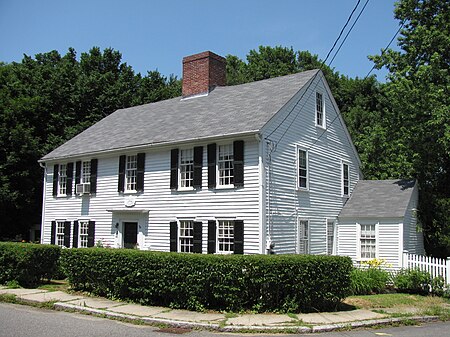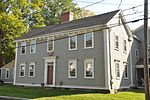Heard-Lakeman House
Colonial architecture in MassachusettsEssex County, Massachusetts Registered Historic Place stubsHouses completed in 1776Houses in Ipswich, MassachusettsHouses on the National Register of Historic Places in Essex County, Massachusetts ... and 1 more
National Register of Historic Places in Ipswich, Massachusetts

The Heard-Lakeman House is a historic house at 2 Turkey Shore Road in Ipswich, Massachusetts. Nathaniel and John Heard built this 2+1⁄2-story wood-frame house in 1776 for Nathaniel to live in. He sold it in 1795 to Richard Lakeman III, member of a seafaring family. The house is notable for an extremely large chimney with an arched foundation over 11 feet (3.4 m) long, which supports two large fireplaces. The building was a notable object of restoration during the Colonial Revival in the 1920s.The house was added to the National Register of Historic Places in 1980, and is subject to local preservation restrictions.
Excerpt from the Wikipedia article Heard-Lakeman House (License: CC BY-SA 3.0, Authors, Images).Heard-Lakeman House
Payne Street,
Geographical coordinates (GPS) Address Nearby Places Show on map
Geographical coordinates (GPS)
| Latitude | Longitude |
|---|---|
| N 42.676388888889 ° | E -70.834166666667 ° |
Address
Payne Street 3
01938
Massachusetts, United States
Open on Google Maps










